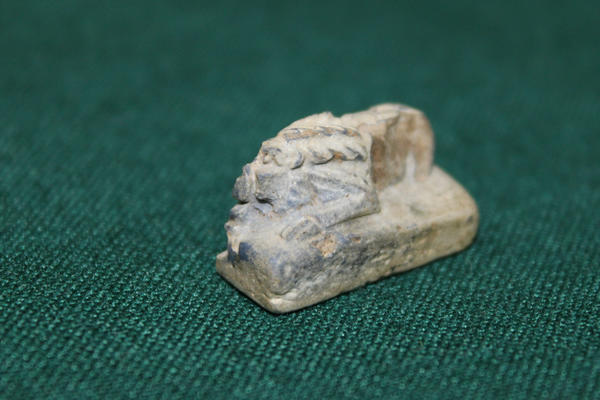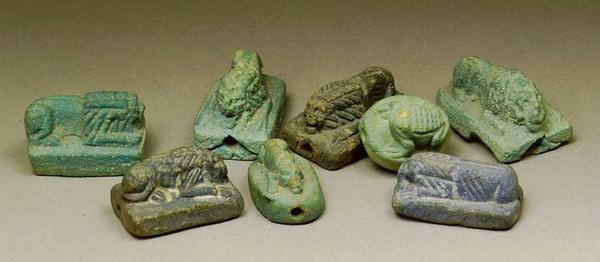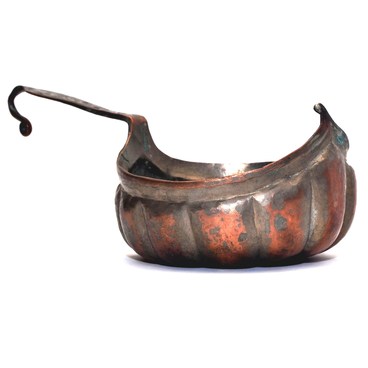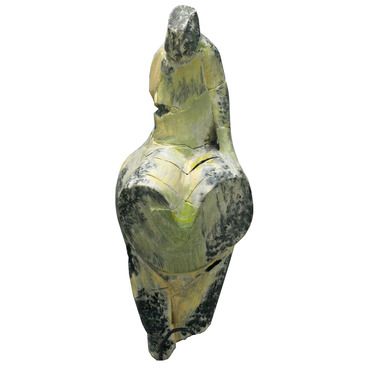The miniature figurine of a lion made of pale-blue faience was found at the site of the ancient settlement at Pochep, one of the largest archeological sites in the Bryansk Region. The first settlement at the site was built in the 1st-2nd centuries A.D. The site was discovered in 1950s by the famous Bryansk archeologist Fyodor Zavernyaev. Also, he was leading the investigations at that time.
A Figurine of a Lion
Время создания
1st-2nd century A.D.
Размер
1,8x0,9x1 cm
1.8х0.9х1 cm
1.8х0.9х1 cm
Техника
Blue vitreous faience
Коллекция
Выставка
1
Открыть в приложении#1
A Figurine of a Lion
#2
#4
The Pochep settlement was located on sandy hills near the Sudost river. This is the place where an archeological culture appeared, later called the ‘Pochep culture’ after the place. The culture emerged under the influence of the two earlier cultures, Zarubintsy and Yukhnov cultures. Some people of those tribes moved from the Middle Dnieper area and what now are Kursk and Oryol Regions to settle on Bryansk lands.
At the site of the ancient settlement, scientists discovered a lot of ceramic pottery, bronze decorations, weapons and tools. Items of foreign origin were also found here: Roman coins and fibula buckles, Greek red-varnished amphoras and a figurine of a lion lying with forelegs stretched.
#5
The figurine was made in Egypt of a special type of faience: paste that looked like blue, violet of yellow opaque glass. It was used to make ornamentals, figurines and pottery. That type of faience was prepared of sand and alkali, such as soda or wood ash. The same components were used in the old times to make glass, however, in different proportions: 20-30% of alkali was used for glass, and only 1-6%, for faience. The first items of that material appeared in Egypt way back in the 2nd century B.C.
#3
Figurines of Egyptian faience found in the Northern Black Sea Area. Source: http://открытаяархеология.рф
#6
Scientists believe that the miniature lion could be used as an insert in a ring or a pendant in a necklace. The Egyptians worshipped those animals as a symbol of power and companions of Maahes, the god of war, thunderstorm and tempest. Aker, the Egyptian god of soil and fertility, was also pictured as a pair of lions. According to the Ancient Greek historian Claudius Aelianus,
#7
‘In Egypt people worship lions, and there is a town named after them. Lions have their temples and their own paces of wandering’.
#8
The ornamental could find its way to the Bryansk Region with Roman or Greek goods. Similar faience figurines were also found in the Black Sea area, where Roman provinces used to be located.
#9
State budgetary cultural institution Bryansk State Regional Ethnography Museum
читать дальшескрыть
00:00
00:00
1x
A Figurine of a Lion
Время создания
1st-2nd century A.D.
Размер
1,8x0,9x1 cm
1.8х0.9х1 cm
1.8х0.9х1 cm
Техника
Blue vitreous faience
Коллекция
Выставка
1
Открыть в приложении
Поделиться




